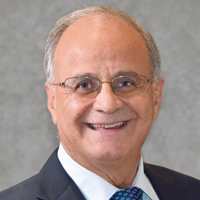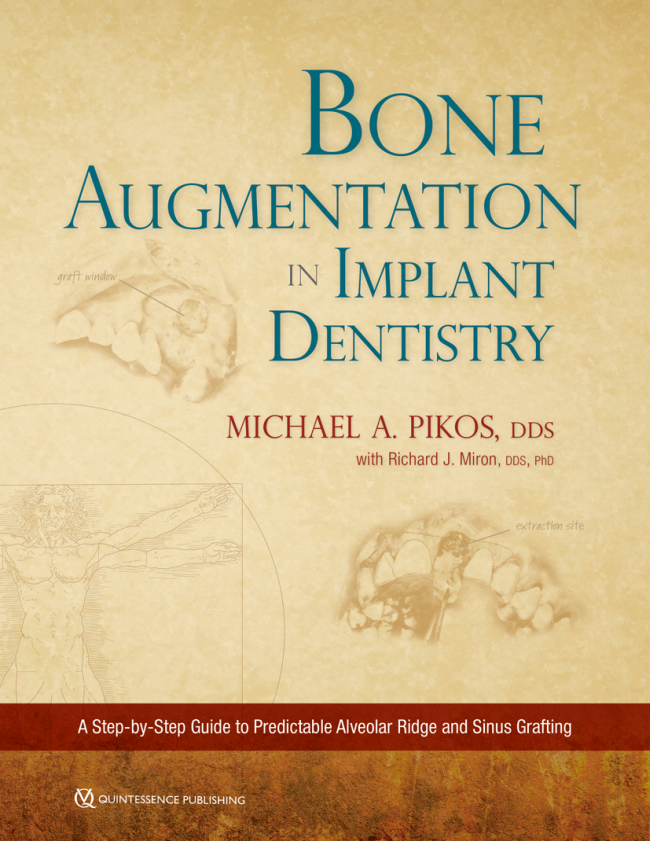International Journal of Periodontics & Restorative Dentistry, 1/2024
DOI: 10.11607/prd.6441, PubMed-ID: 37677137Seiten: 51-57, Sprache: EnglischPikos, Michael A. / Miron, Richard J.The ability for clinicians to adequately obtain primary stability in host bone is critical to the success of dental implants. Numerous conditions require dentists to perform multistage approaches to rebuild deficient bone volume prior to surgically placing implants. In many instances, implant placement cannot be achieved due to a lack of primary implant stability. Recently, a novel mineral-organic resorbable bone adhesive (MORBA) has demonstrated promising results in animal studies. MORBA is a synthetic, injectable, self-setting, load-bearing adhesive biomaterial that exhibits osteopromotive properties and bonds bone to bone and metal within 10 minutes and can fully resorb in 30 weeks. Its unique novel formulation was developed from biomimetic proteins found in marine animal creatures that possess distinct adhesive properties underwater. Excellent long-term results have shown its potential use for achieving primary stability in immediate implants. The present case report demonstrates the first use of MORBA in a human patient, utilized on a nonrestorable mandibular first molar. MORBA was utilized after placement of a mobile 5.8-mm implant to achieve stabilization. At 3 months postsurgery, both clinical and CBCT evaluations showed maintained implant stability. One year after implant placement, radiographic bone was seen on the buccal surface of the implant with continued long-term stabilization. This case report extends to 3 years whereby the use of MORBA, in an initially unstable situation, demonstrated an excellent long-term follow-up. MORBA provided immediate implant stability with resorbable characteristics, leading to successful long-term clinical outcomes up to 3 years. This innovative biomaterial offers a more efficient solution to a critical problem in implant dentistry, allowing optimal primary stability during immediate implant placement, thus reducing treatment times and costs.
The International Journal of Oral & Maxillofacial Implants, 2/2020
DOI: 10.11607/jomi.7245, PubMed-ID: 32142575Seiten: 379-385, Sprache: EnglischMitsias, Miltiadis M. / Bratos, Manuel / Siormpas, Konstantinos / Pikos, Michael A. / Kotsakis, Georgios A. / Root Membrane GroupPurpose: To assess longitudinal volumetric changes during immediate implant placement with simultaneous intentional retention of the buccal aspect of the root.
Materials and Methods: This study assessed 10 cases drawn from a previously reported cohort that had study casts available pretreatment and at least 2 years after periodontal ligament (PDL)–mediated immediate implant placement. Gypsum casts were scanned using a laser scanner and converted into digital three-dimensional rendered files. The digital casts were superimposed, and semi-automated subtractive assessment was performed via specialized software.
Results: Data from 10 patients with a minimum of 3 years follow-up (median follow-up time: 42 months) were analyzed. Each person contributed one implant site in this study. All implants successfully maintained osseointegration during the follow-up period and demonstrated optimal soft tissue stability. Changes during the observation period ranged from 0.19 mm (95% confidence interval [95% CI]: 0.10 to 0.28) in the midfacial region 6 mm apical to the mucosal zenith to –0.06 mm (95% CI: –0.14 to 0.02) at 5 mm apical to the base of the distal papilla. All changes were noninferior to pre-extraction baseline measurements based on a 0.5-mm noninferiority margin.
Conclusion: The intentional retention of the buccal aspect of the root with its periodontal apparatus during immediate implant placement led to optimal soft tissue dimensional stability in the esthetic zone. This technique holds promise for clinical application, and further controlled clinical studies are warranted to determine the comparative clinical benefit from the use of this procedure.
Schlagwörter: flapless procedure, immediate placement, PDL-mediated implant placement, surgical procedure
Quintessence International, 6/2017
DOI: 10.3290/j.qi.a38139, PubMed-ID: 28462406Seiten: 497-502, Sprache: EnglischQureshi, Arslan / Kellesarian, Sergio Varela / Pikos, Michael A. / Javed, Fawad / Romanos, Georgios E.Objective: The purpose of the present study was to review indexed literature and provide an update on the effectiveness of high-frequency radio waves (HRW) application in modern general dentistry procedures.
Data Sources: Indexed databases were searched to identify articles that assessed the efficacy of radio waves in dental procedures.
Results: Radiosurgery is a refined form of electrosurgery that uses waves of electrons at a radiofrequency ranging between 2 and 4 MHz. Radio waves have also been reported to cause much less thermal damage to peripheral tissues compared with electrosurgery or carbon dioxide laser-assisted surgery. Formation of reparative dentin in direct pulp capping procedures is also significantly higher when HRW are used to achieve hemostasis in teeth with minimally exposed dental pulps compared with traditional techniques for achieving hemostasis. A few case reports have reported that radiosurgery is useful for procedures such as gingivectomy and gingivoplasty, stage-two surgery for implant exposure, operculectomy, oral biopsy, and frenectomy. Radiosurgery is a relatively modern therapeutic methodology for the treatment of trigeminal neuralgia; however, its long-term efficacy is unclear. Radio waves can also be used for periodontal procedures, such as gingivectomies, coronal flap advancement, harvesting palatal grafts for periodontal soft tissue grafting, and crown lengthening.
Conclusion: Although there are a limited number of studies in indexed literature regarding the efficacy of radio waves in modern dentistry, the available evidence shows that use of radio waves is a modernization in clinical dentistry that might be a contemporary substitute for traditional clinical dental procedures.
Schlagwörter: dentistry, electrosurgery, radiofrequency, radiosurgery, radio waves
The International Journal of Oral & Maxillofacial Implants, 1/2015
DOI: 10.11607/jomi.3977, PubMed-ID: 25615925Seiten: 202-207, Sprache: EnglischMisch, Craig M. / Jensen, Ole T. / Pikos, Michael A. / Malmquist, Jay P.Purpose: This retrospective study evaluated the use of a composite graft of recombinant human bone morphogenetic protein-2 (rhBMP-2) and particulate mineralized bone allograft protected by a titanium mesh for vertical bone augmentation.
Materials and Methods: A review of data on patients from four oral and maxillofacial surgery practices in the United States who required vertical augmentation prior to implant treatment was conducted. Vertical augmentation was accomplished with rhBMP-2 in an absorbable collagen sponge (ACS) carrier and particulate allograft. Cone beam computed tomography was used to measure vertical bone gains using this technique.
Results: Sixteen vertical ridge augmentation procedures were performed in 15 patients. The maximum vertical bone gains ranged from 4.4 to 16.3 mm. The average maximum vertical bone gain was 8.53 mm. The procedure allowed implant placement in all patients. Forty implants were inserted into the grafted ridges after a minimum of 6 months of healing. All implants integrated and were used for prosthetic support.
Conclusion: This study suggests that rhBMP-2/ACS and particulate mineralized bone allograft protected by a titanium mesh offers favorable vertical bone gains to allow dental implant placement.
Schlagwörter: cone beam computed tomography, recombinant human bone morphogenetic protein-2, titanium mesh, vertical bone augmentation




